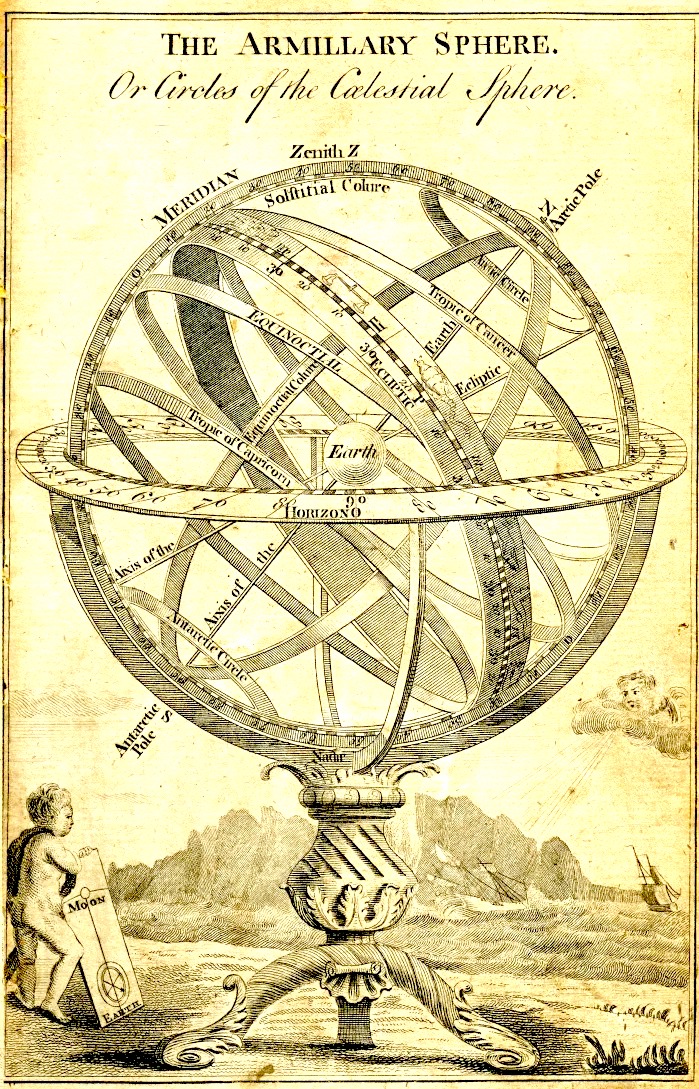
Armillary spheres date back to the ancients, and were certainly used by the 2nd-century astronomer and mathematician Claudius Ptolemy of Alexandria. They were mathematical instruments designed to demonstrate the movement of the celestial sphere about a stationary Earth at its centre. The concept of the celestial sphere was fundamental to astronomy from Antiquity through the Middle Ages and into the early Modern era.
At the centre of the sphere is the Earth. As the Earth is stationary in this model, it is the celestial sphere which rotates about it and acts as a reference system for locating the celestial bodies – stars, in particular – from a geocentric perspective.
It wasn’t until the middle of the 1500s CE that the basis of the instrument – a geocentric concept of the Universe – was seriously challenged by the Polish mathematician Nicolaus Copernicus. Even then, the instrument still continued to serve a useful purpose as a purely mathematical instrument. Held stationary at the centre is a small brass sphere representing the Earth.
About it rotate a set of rings representing the heavens – the celestial sphere – with one complete revolution approximating 24 hours.
The sphere is mounted at the celestial poles that define the axis of rotation, and its structure includes an equatorial ring and, parallel to this, two smaller rings representing the Tropics of Cancer and Capricorn to the north and south, respectively.
Touching each of these circles, and crossing the celestial equator at points representing the equinoxes (equal hours of night and day), is the ecliptic circle or Zodiac ring. This ring represents the annual pathway of the Sun as, independently of the other stars, it makes its unique journey through the constellations of the Zodiac. https://www.hsm.ox.ac.uk/armillary-sphere
See Also
